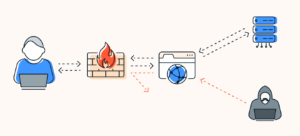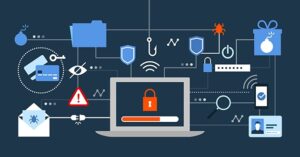The goal is to move from financial anxiety to security by establishing a liquid, easily accessible savings buffer. This five-step plan emphasizes clarity, automation, and consistent effort over time.
Step 1: Define Your Goal—How Much Do You Need?
Before you can start saving, you need a clear target. The standard rule of thumb is to save three to six months’ worth of basic living expenses.
It is crucial to define living expenses, not income. This includes only the essential, non-negotiable costs you would have even if your income stopped.
Essential Monthly Expenses Include:
- Housing: Rent or mortgage payment
- Food: Groceries (not dining out)
- Utilities: Electricity, water, gas, and basic internet/phone
- Transportation: Car payment, insurance, fuel, or public transit
- Debt Payments: Minimum payments on student loans, credit cards, or other debt
- Insurance: Health, car, and home/renter’s insurance
Expenses to Exclude (Wants):
- Streaming services
- Gym memberships
- Vacation savings
- Dining out
- Discretionary shopping
The Calculation
- Tally Your Essential Monthly Expenses: Let’s say your total essential expenses are $3,000 per month.
- Determine Your Target: To aim for a six-month fund, you would calculate: $3,000×6 months=$18,000 Your goal is to save $18,000.
Adjusting the Target:
- Higher Risk (Self-Employed, Single Income, Unstable Job): Aim for the higher end, six to nine months of expenses.
- Lower Risk (Dual Income, High Job Security): Three to six months may be sufficient.
- Starting Out: Don’t let the final number discourage you. Start with a smaller, more achievable starter goal, like $1,000 or one month of expenses, and build from there. Any fund is better than none.
Step 2: Choose the Right Account
The location of your emergency fund is nearly as important as the amount. The funds must be safe and liquid (easily and quickly accessible) and should not be subject to market risk.
Ideal Location: High-Yield Savings Account (HYSA)
A high-yield savings account is the best vehicle for your emergency fund for three main reasons:
- Liquidity: You can access the money immediately via transfer if an emergency strikes, without penalties.
- Safety: HYSAs are typically FDIC-insured (or equivalent government-insured), protecting your principal up to the legal limit. This means your money is safe, unlike investments in the stock market.
- Growth: They offer a much higher interest rate (Annual Percentage Yield or APY) than traditional savings accounts, helping your money grow faster and combat inflation while it sits idle.
Important Note: Do not invest your emergency fund in the stock market. Investments are subject to market volatility, and you risk needing the money when the market is down, forcing you to sell at a loss. An emergency fund is an insurance policy, not a retirement investment.
Keep it Separate: Open the HYSA at a different bank than your primary checking account. This makes it “out of sight, out of mind” and reduces the temptation to dip into it for non-emergencies.
Step 3: Automate Your Contributions
The most effective strategy for building your fund is to eliminate the decision-making process. The secret to consistent saving is automation.
Treat Your Savings Like a Bill:
- Set up an automatic transfer from your checking account to your dedicated emergency fund account. Schedule this transfer to occur immediately after your payday.
- Start Small and Increase: If you can only afford $50 per paycheck, start there. Once you adjust to the new budget, challenge yourself to increase the amount to $75, then $100, and so on.
- Direct Deposit Split: Check if your employer allows you to split your direct deposit across multiple accounts. This lets you send a portion directly to your emergency fund before the money even hits your checking account, preventing you from ever seeing it and spending it.
The power of automation is that it removes the mental burden and the willpower required to save, making your progress inevitable.
Step 4: Find Extra Cash (Needs vs. Wants)
To accelerate your savings, you need to find extra money within your current budget. This is where you conduct a “Surgical Strike” on your expenses, distinguishing between needs and wants.
Analyze Your Discretionary Spending:
Go through your bank statements for the last three months and identify three key areas to cut:
- Subscriptions: How many streaming, meal kit, or membership services are you paying for but rarely using? Cancel them.
- Food & Drink: Take-out, delivery, and daily coffee runs are major budget killers. Meal prep and make your coffee at home.
- Entertainment: Reduce non-essential spending like expensive concert tickets or frequent nights out.
Monetize Windfalls:
Any unexpected money that comes your way should be immediately funneled into your emergency fund, especially until you hit your initial target.
- Tax refunds
- Work bonuses
- Birthday money
- Proceeds from selling unused items
These funds can provide a significant boost without affecting your regular budget.
Step 5: Define an Emergency and Commit to Replenishing
Your emergency fund needs a clear purpose. If you treat it like a slush fund for any unplanned expense, you will deplete it quickly.
What Qualifies as an Emergency?
A true financial emergency is an unexpected, necessary, and urgent expense that you cannot cover with your regular monthly income.
True Emergencies:
- Job loss or significant reduction in income
- Major, uncovered medical expenses
- Urgent home repairs (e.g., broken furnace, burst pipe)
- Essential car repairs (e.g., transmission failure)
NOT Emergencies (Use Regular Savings or Budget for These):
- A planned vacation
- Holiday shopping
- A new smartphone or gadget
- A great sale on clothes
The Replenish Rule
If you have to use your emergency fund for a legitimate crisis, your immediate next financial goal is to replenish the fund back to its target amount. Treat the hole in your fund with the same urgency as a financial leak. Re-activate your automation and direct all extra cash until the fund is whole again.
Summary: Your Roadmap to Financial Security
Building a solid emergency fund is a marathon, not a sprint. It is a long-term habit built on simple, consistent actions. By systematically applying these five steps—defining your target, choosing a high-yield savings account, automating your transfers, cutting non-essential spending, and setting clear usage rules—you create an impenetrable financial fortress.
The result is not just a larger bank balance, but a deep sense of confidence and peace that allows you to weather any storm without compromising your future. Start today, even if it’s with just $25, and commit to the simple plan. Your financial future depends on it.
What is the first step you will take today to start or strengthen your emergency fund?



